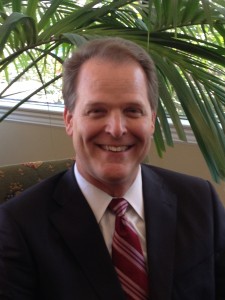Daily Business Report — July 6, 2012
Home Sales Up, Prices Down Over Last Year,
Reports San Diego Association of Realtors
The number of single-family homes sold through the first six months of this year is up compared with the same time in 2011, but the median price is down, according to figures released by the San Diego Association of Realtors Thursday. In San Diego County, 11,737 houses were sold between January and June, a 13.7 percent increase over the first half of last year, the SDAR figures showed. The association said the median price of a detached home in the first two quarters of 2012 was $367,000, compared with $372,000 in 2011. The statistics show, however, that the median price of a house has been inching higher since hitting a low point in January. The average number of days on the market was similar, 86 this year compared with 85 last year. The number of active listings in the region, at more than 6,000, is about half what it was this time last year, according to the SDAR. Figures for condominiums in the first six months of the year shows opposite trends from the houses. The SDAR figures show that the number of sales of attached homes dropped from 5,412 last year to 5,316 this year. The median price climbed from $209,050 to $215,000. — City News Service
Peter Callstrom Named President and CEO
of the San Diego Workforce Partnership
Peter Callstrom, executive director of the San Diego County Regional Task Force on the Homeless, has been named the new president and CEO of the San Diego Workforce Partnership (SDWP), the regional organization that funds job training programs. More than $30 million in federal job training funds will be deployed over the next fiscal year to 20 funded partners, such as International Rescue Committee, Veterans Village of San Diego, MAAC Project, YMCA of San Diego County, ARC of San Diego, North County Lifeline, South Bay Community Services, and UC San Diego. “We look forward to Peter Callstrom’s leadership of this outstanding organization and further enhancing the San Diego Workforce Partnership’s role in meeting the workforce needs of the entire region,” said Councilman Anthony Young, chair of the Consortium Policy Board.
SD Metro July Banking Feature
The Power of Community Banks
A conversation with Steven Sefton, Regents Bank’s new president 
After the global financial crisis and mortgage meltdown, mega banks are busy trying to repair their images, while the community banking industry emerges with an untarnished reputation. Small and mid-sized businesses power the economy, and community banks serve many such businesses. As a result, community banks can rise and fall on the same tide as their clients. So what’s a business owner to do when deciding where to go for a loan?
Regents Bank’s new president, Steven Sefton, has 28 years of banking experience in Southern California. He shared with San Diego Metro about the power of community banks.
Q. Big banks have huge amounts of money available to lend. Why wouldn’t a small business owner go there first?
A. Big banks are in and out of the community bank market, depending upon which way the winds blow. A big bank’s mission is making money in a variety of markets that may or may not include the community. In contrast, the mission of a community bank is to invest in its community. The personalization of services is likely to be better at a community bank as well, because it’s not structured on a “plug-and-chug” system for important services like evaluating borrowing needs.
Q. Where can a business owner find the best advisory relationship?
A. I believe it can be found in either a large bank or a community bank, it’s just more difficult to find in a large bank. People provide the business advice that business owners want and need, not institutions. It’s all about the banker. I was recently talking with a frustrated big-banker. She was scolded by her boss for selling herself rather than the bank, but business owners choose relationships with people, not institutions. By the way, the banker got there because her community bank was bought by the big bank.
Q. You emphasize advice and advisory services. What exactly does that mean?
A. Decades ago, the local community banker was on the business owner’s advisory team for critical decision making. It was a close relationship that enabled the banker to customize his or her advice according to the endless variables that exist for each business. I believe bankers should still operate according to this legacy, and community bankers are well positioned to do so.
Q. Back to lending, don’t big banks make the majority of business loans?
A. Measuring by total amount loaned, yes, but Independent Community Bankers of America reports that community banks made 58 percent of outstanding bank loans to small businesses. The key difference is that the community bank approach is consultative, and the big bank approach is about commodity — who can provide the lowest rate and most relaxed terms?
Q. If a business owner already banks with a big bank, shouldn’t they start there for the loan?
A. Sure. If a business owner has that gold nugget of a banker who is doing all the consultation I described. If not, a business owner can get the same or close to the same pricing and terms with the community banker and get so much more in return. We recently sat on a panel with local big bankers, and one conceded that his big bank discourages consultative banking and sees it as a legal liability.
Q: Won’t a business owner get a better interest rate from a big bank?
A. Even if a community bank has a higher rate, it can be a better overall relationship and worth the bit of extra cost. When times are good, anyone can do business with a big bank, but the relationships with senior management that you get at a community bank can be priceless when a business hits the inevitable bumps in the road. Another advantage is that you’re likely to find faster turnaround for loan decisions at a community bank.
Q. What if the community bank goes under or gets acquired after it makes a business loan?
A. There is no reason to wait for your bank to fail. Require your bank, both community and big bank, to give you a report card on performance every quarter to stay ahead of a problem. If your community bank is acquired, it shouldn’t matter, because the acquiring entity will bend over backwards to keep the existing clients.
Q. What about big banks that specifically advertise to small businesses?
A. Anyone can talk the talk. I recently read a Bloomberg article about a very large bank that touted their old-fashioned loan and deposit (community banking) strategy. But in the same article, deep at the bottom, the CEO conceded that his earnings were driven by non-bank services. Where a bank’s earnings are, there resides its heart. A community bank’s heart is with its clients, in the community.
The Daily Business Report is produced by SD METRO. Contact: Manny Cruz (619) 287-1865. manny@sandiegometro.com.



